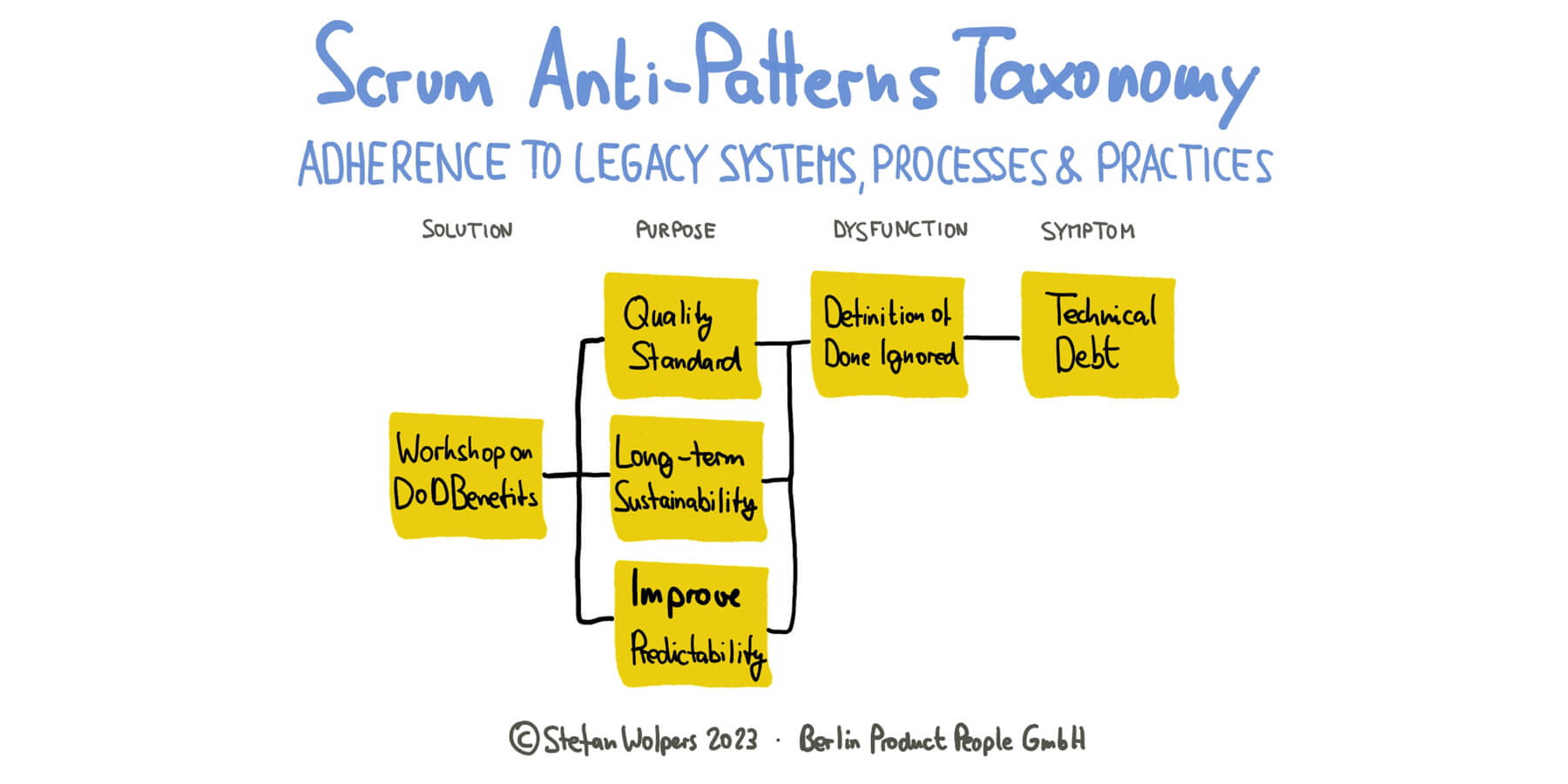Adherence to Legacy Systems, Processes, and Practices
The first article in this series will address communication and collaboration issues at the team and organizational levels.
Administrative overreach and micromanagement in Scrum mainly arise from clinging to legacy systems and traditional (management) practices, leading to rigidity and misapplication of Agile principles. The excessive control by stakeholders and the management level stifles creativity and adaptability, disrupting planning and hindering a Scrum team’s growth. Moreover, these categories from the Scrum anti-patterns taxonomy often emphasize an unbalanced focus on short-term gains, neglecting long-term strategy, value creation, and the essential alignment among all stakeholders to succeed in uncertainty.
Learn how these Scrum anti-patterns categories manifest themselves and how they affect value creation for customers and the long-term sustainability of the organization.
This is the first of three articles analyzing the 183 anti-patterns from the upcoming Scrum Anti-Patterns Guide book. The following article will address communication and collaboration issues at the team and organizational levels.

Adherence to Legacy Systems, Processes, and Practices
Let us delve into the three aspects of adhering to legacy systems, processes, and practices from the Scrum anti-patterns taxonomy — administrative overreach, interfering with Scrum Teams by overstepping and micromanagement, and overemphasis on immediate value:
1. Administrative Overreach
Administrative overreach in the Scrum context often results from the continued prevalence of legacy systems and processes, interfering with Scrum’s first principles. It refers to a reluctance to embrace Agile practices and clinging to traditional ways, leading to rigidity, bureaucracy, and misunderstanding of principles. It includes tasks and behaviors that undermine the philosophy of self-management, empowerment, and flexibility inherent to Scrum, failing to adapt, a reversion to non-Agile practices, or even an outright rejection of Agile principles.
These actions can manifest as inconsistent implementation of Scrum practices, impeding the team’s growth and independence, disrupting planning, and creating confusion and inefficiencies. Administrative overreach reflects resistance to Agile values, emphasizing form over function and hindering adaptability and responsiveness.
Manifestation Examples:
- Overemphasis on rigidity can divert attention from value delivery and foster a risk-averse environment.
- Imposition of bureaucratic processes, fixed structures, and prioritizing process over value can severely limit adaptability.
- Confidentiality and secretive practices lead to a loss of agility, undermining transparency and collaboration.
- Focusing too much on following every detail of a prescribed process rather than understanding its underlying principles can stifle creativity, collaboration, and responsiveness.
- Misuses of Scrum events, for example, using Sprint Reviews as an approval gate or conducting rushed Retrospectives, reflect a lack of commitment to the Scrum process
- Traditional steering meetings and stakeholder interference disrupt Scrum practices, reflecting resistance to Agile practices.
- Overly detailed planning, including an oversized Product Backlog or insisting on comprehensive acceptance criteria, leads to a lack of flexibility in planning.
- Rigid requirements or criteria for releasing Increments inhibit the ability to respond to change and continuously maximize value.
- A push to revert to non-Agile practices in emergencies.
2. Interfering with Scrum Teams by Overstepping and Micromanagement — Scrum Anti-Patterns Taxonomy
This Scrum anti-patterns taxonomy category primarily deals with excessive control and interference with Scrum Teams, stifling creativity, self-organization, autonomy, and trust. The transgressions may come from various parties, including stakeholders or line managers, contravening the core Agile principles of trust, collaboration, self-management, and adaptability. This overarching issue may manifest differently depending on the context — for example, organizational culture or size or the market the organization serves — and impact the Scrum Team’s decision-making processes.
Manifestation Examples:
- Stakeholders’ undue intrusion into decision-making processes.
- Lack of clear role definitions resulting in unwarranted interference from outsiders.
- Imposition of decisions or arbitrary goals or forecasts by individuals or stakeholders.
- Enforcement of practices or direct command and control by managers.
- Direct assignment of specific tasks by managers to Developers.
- “Prioritization by proxy,” diminishing the Product Owner’s role.
- Outsiders decide when and what to release or fail to release.
3. Overemphasis on Immediate Value
This category of the Scrum anti-patterns taxonomy emphasizes the dangers of an excessive focus on short-term gains or immediate value at the cost of long-term strategy, alignment, and sustainability. Such an approach may lead to neglecting vital aspects of product development and overshadowing broader organizational goals and relationships. The category serves as a reminder to balance short-term deliverables with the overall success and sustainability of the product and organization.
Manifestation Examples:
- Excessive focus on immediate user value, neglecting long-term strategy and alignment with overall goals.
- Overlooking broader relationships and crucial aspects of product development that may not yield immediate value but are essential for long-term success.
- Pressure to deliver quickly may result in increased technical debt, compromising the product’s longterm technical sustainability by neglecting of non-urgent but important tasks.
- Misalignment of organizational and teams goals, leading to becoming a feature factory.
- Slow but steady deterioration of customer satisfaction levels.
- Increased conflict among team members and fading team morale.
- Loss in confidence in the leadership team amid the wrong focus.
Scrum Anti-Patterns Taxonomy: Conclusion
The struggle with adherence to legacy concepts, processes, and practices in Scrum underscores the importance of embracing Agile principles over traditional systems.
It manifests as excessive control and interference, stifling creativity and autonomy and prioritizing short-term gains at the expense of long-term strategy. Instead, organizations must recognize the dangers of this approach and strive for a balanced perspective that aligns immediate deliverables with the overall success and sustainability of the product and the broader organizational goals. By doing so, they can foster a culture of self-management, empowerment, flexibility, and proper adherence to Scrum principles.


Comments